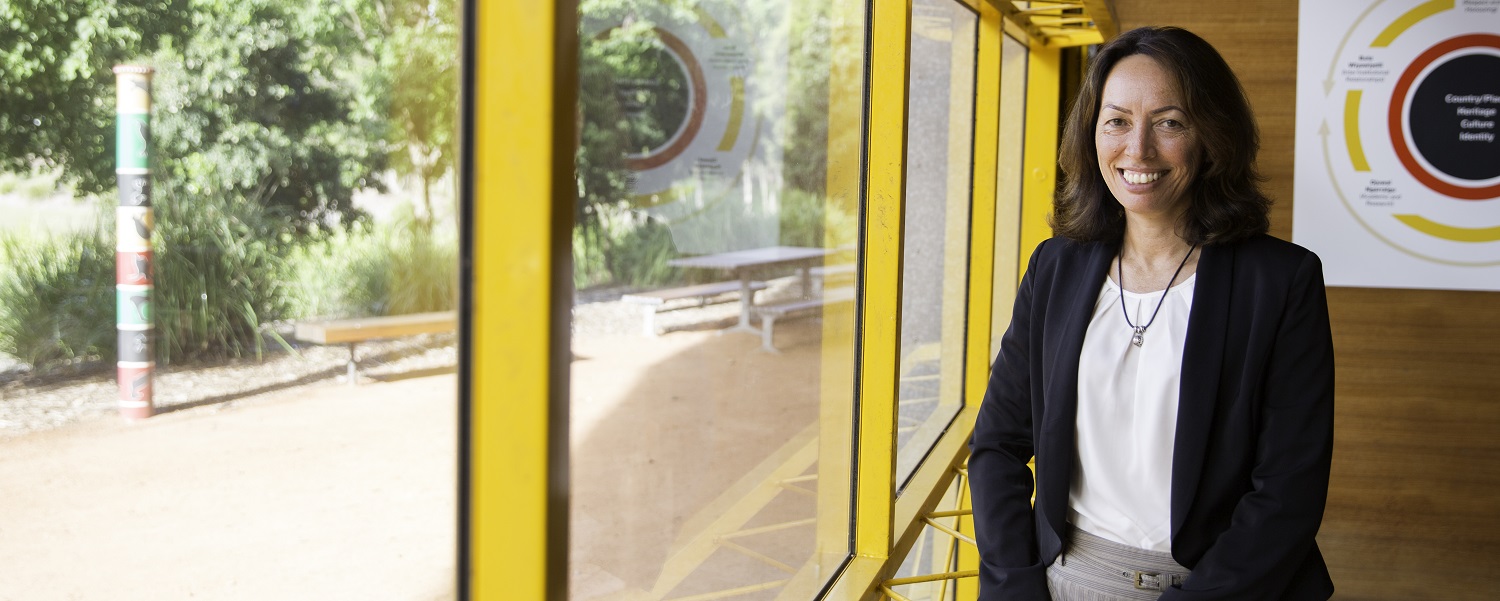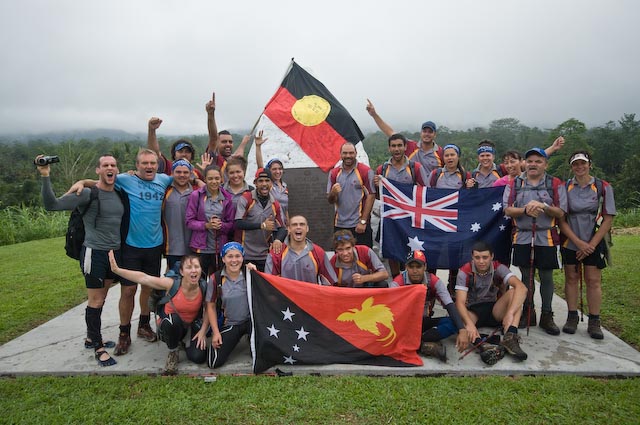
Leah Armstrong

We sit down with Leah Armstrong to talk about her values, reconciliation and her new role as Director, Wollotuka - Indigenous Education and Research.
We are a very large Torres Strait Islander family. My mother is the oldest of 11 and her mother was one of 13. We celebrated Torres Strait Islander culture, but like many Torres Strait Islander and Aboriginal people we also have connections with Malays and Japanese so we would celebrate those cultures as well.
Torres Strait Islander people are salt water people. I grew up in Mackay and fishing is part of our family livelihood. The boys and men would go hunting for traditional food and the women would go fishing and prepare the food.
Strong matriarchal women are our first influences. My grandmother (who is 100 in October) and my mother have been role models to me. We had a very strong work ethic in the family. My uncles were very entrepreneurial always employed or engaged in their own businesses.
My approach to work has been influenced by people like Anita Roddick, founder of the Body Shop. She did business for good with a focus around shared value and business being a way of creating not just financial wealth, but community and social wealth as well. I have always felt a strong sense of needing to give back to the community. That might have come from my mother, who was a nurse.
I have always leaned towards paths where I could create social and emotional wellbeing.
When I look at the work I have done, the purpose has always been important. Unless I believe in the purpose and feel that I can make a valuable contribution (rather than a purely financial outcome) then I don’t think I would last. I have always leaned towards paths where I could create social and emotional wellbeing.
Career highlights for me are the things that aren’t put up in lights. At Yarnteen our purpose was to provide training and employment for the local community so people could get jobs. A young Aboriginal man was on the unemployment benefit, going from one training program to another, one training job to another, and we finally got him into a permanent, full time job. He was then able to buy his family a car, and then his wife got a job and this meant they could take greater care of the kids. Those are the things I remember.

A few years ago I trekked the Kokoda Trail. I was fortunate to participate in an Indigenous youth mentoring program for the Jobs Australian Foundation, a leadership program for Aboriginal kids from all over Australia to build resilience and leadership capabilities. This was just before I started with Reconciliation Australia so it was a great time to think and reflect. It put the history of Kokoda in perspective and also allowed me to reflect on the past 20 years of my work and where my next journey would take me.
The reconciliation piece is important to me here at the University in terms of how we build better relationships across the University on an individual basis, and then on a school and faculty basis. That requires ensuring that every person in the University respects and understands Aboriginal and Torres Strait Islander history and culture and the effect of the history of Australia’s colonisation so we can move forward together. It will be challenging. Whilst we want to build those relationships across the University, Wollotuka is only a small cohort, so how do we ensure we are able to effectively achieve this, but at the same time keep our focus on the students, our teaching and our support so that we’re getting the best outcomes for our students? We want to create an environment where our students feel they are part of a broader student community and are comfortable and confident across the whole University – not just at Wollotuka. The University’s strategic plan is big picture thinking and that’s what’s exciting.
It’s ambitious, but that’s what reconciliation is. It’s a big, ambitious, nation building approach and it’s not necessarily about an end point, it’s more the steps and processes we take to achieve it that are important.
It’s ambitious, but that’s what reconciliation is. It’s a big, ambitious, nation building approach and it’s not necessarily about an end point, it’s more the steps and processes we take to achieve it that are important. I enjoyed the challenge of stepping up into that national role, it pushed me out of my comfort zone. What I didn’t appreciate until I sat behind the desk was that our target audience is everyone. From the Prime Minster to political parties, to the CEOS of the top 100 companies in Australia, right down to small preschools. It is vital for us to overcome the barriers of discrimination and poverty for Aboriginal and Torres Strait Islander people and all non-Anglo Australians.
Collaboration rolls off the tongue easily, but it’s difficult sometimes to get good collaboration in place. The curious, collaborative and courageous values are ingrained in everything we do. Curiosity is what universities do, we’re about discovery, and we need to have those courageous conversations about racism and the effects of racism on Aboriginal and Torres Strait Islander and non-Anglo Australians. And we can’t do this alone. We need to be able to develop relationships and collaborate better, and we need to collaborate better internally as well.
Over the past two years I’ve been commuting to Sydney doing board and committee work. I’ve stepped down from half the boards to take on this full time role but I still have four roles that I sit with in government and not-for-profit. The roles are in the Aboriginal and Torres Strait Islander space so they bring some really good opportunities for Wollotuka and the University. I’m looking forward to forming partnerships which will open opportunities for our students to get work experience and increase their employability.
My grandfather was a travelling showman and part of his show was the pit of death with snakes. He became an educator about snakes and travelled Queensland visiting schools and shopping centres teaching the kids about snakes and how to handle snakebites. They were amazing shows, he’d have boxes of snakes and just pull one out and show the kids how to milk a snake. He also supported the development of the antivenin for the deadly taipan snake by milking the taipan and sending that away to the Commonwealth Serum Laboratory. He was bitten several times by a taipan and in his later years when he was still doing shows he had little movement in his legs. I’m not a snake handler, but they don’t faze me. My advice is, just leave them alone!
The University of Newcastle acknowledges the traditional custodians of the lands within our footprint areas: Awabakal, Darkinjung, Biripai, Worimi, Wonnarua, and Eora Nations. We also pay respect to the wisdom of our Elders past and present.